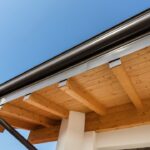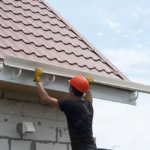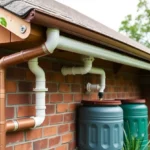For homeowners aiming to comprehend their property’s makeup, knowing what are the parts of a roof called is a steppingstone to informed repairs and maintenance. Recognizing each component’s function within the intricate system of a roof empowers responsible homeownership.

The Framework: A Roof’s Foundation
1. Rafters and Trusses: The Backbone
At the heart of a roof’s structure are the rafters and trusses. These are pivotal as they bear the load of roofing materials, ensuring durability and strength.
2. The Flat and Sloped Structures
Roofs vary with their flat or sloped structure. This characteristic impacts water flow and the overall design aesthetics of the home.
Protective Layers: Contributing Coatings
3. Underlayment: Silent Protector
The roofing underlayment is a critical layer offering protection against moisture, lying beneath the outer roofing material.
4. Roof Shingles or Tiles: The First Line of Defense
Shingles or tiles serve as the primary barrier against the elements, providing both protection and visual appeal to the house.
Essential Components
5. Fascia and Soffit: Defining the Edges
The fascia serves both decor and structural purposes, supporting the weight of the lower edge of the roof. The soffit, meanwhile, aides in ventilation and protection against external elements.
6. Gutters and Downspouts: Effective Water Management
The significance of gutters in diverting water cannot be overstated. They guide water away from the house’s foundation, preserving structural health.
7. Flashing: A Watertight Seal
Flashing involves thin materials that protect intersections between roof elements, ensuring water remains outside where it belongs.
Roof Design and Hidden Structures
8. Types of Roofs
Understanding roof styles enhances one’s grasp of architectural diversity. Options range from gabled to hip roofs, each with its unique benefits.
9. Gutters and Drip Edge: Essential Roof Accessories
Drip edges are metal sheets that guide water flow into gutters, preventing damage to underlying roof structures.
10. Roof Ventilation: Key to Longevity
The importance of roof ventilation lies in its ability to dissipate heat and moisture, extending the roof’s life.
Advanced Roofing Materials
11. Modern Roofing Material Choices
From traditional shingles to modern alternatives like EPDM roofing, choices abound, each contributing to energy efficiency and sustainability.
Understanding Costs and Maintenance
12. Roofing Costs and Considerations
A comprehensive understanding of roof costs ensures homeowners are prepared for both scheduled new roof cost discussions and unexpected repairs.
13. Regular Roofing Maintenance
Regular roof inspections and maintenance are vital to prevent minor issues from escalating into costly repairs.
Choosing the Right Service Providers
14. Selecting a Roofing Company
Choosing the right roof construction company is crucial to project success, ensuring both quality and budget are maintained.
Conclusion: More Confident Homeowners
By comprehending what are the parts of a roof called, homeowners are better positioned for decision-making regarding their roofs, be it in everyday maintenance or significant renovations.

FAQs
What is the purpose of roof rafters?
Rafters provide structural support for roofing materials, ensuring a roof’s strength and stability.
How often should I inspect my roof?
It’s advisable to conduct roof inspections biannually and after major weather events.
Can I choose any roofing material?
While several options exist, the choice depends on factors like local climate, house design, and budget.
This article contains affiliate links. We may earn a commission at no extra cost to you.







